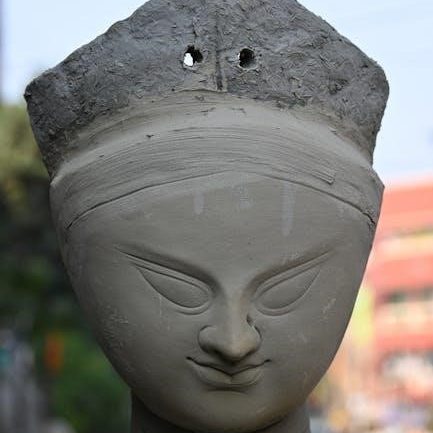Ode to a Nightingale PDF: An Exploration
Dive into John Keats’s “Ode to a Nightingale” with a comprehensive PDF exploration! Uncover the poem’s depths through readily available resources online. Analyze the text, imagery, and themes. Discover critical essays and interpretations, exploring Keats’s masterpiece in detail, enhancing your understanding of its beauty and complexity through easily accessible PDF documents.

Overview of “Ode to a Nightingale”
“Ode to a Nightingale,” penned by John Keats in 1819, stands as one of his most celebrated odes. This poem, composed of eight stanzas, delves into the speaker’s contemplation of mortality, beauty, and the allure of escapism upon hearing a nightingale’s song. The poem begins with a feeling of numbness and ache, as if the speaker had ingested poison, leading to a desire to fade away with the bird into the forest’s obscurity.
The central theme revolves around the contrast between human suffering and the nightingale’s seemingly immortal joy. Keats explores the transient nature of life, where beauty fades and love pines away, set against the eternal song of the nightingale. The speaker longs to transcend earthly woes, yearning for a realm untouched by weariness, fever, and fret.
Through vivid imagery and emotional depth, Keats crafts a meditative journey, questioning the boundaries between reality and illusion. The nightingale becomes a symbol of enduring beauty and artistic inspiration. The poem culminates in the speaker’s return to reality, pondering whether the entire experience was a waking dream or a genuine vision, leaving readers to reflect on the power of art and the human condition.
John Keats: The Poet Behind the Ode
John Keats, an eminent figure of the Romantic era, was born in London in 1795 and tragically died at the young age of 25. Despite his short life, Keats left an indelible mark on English literature, celebrated for his sensuous imagery, profound emotional depth, and exploration of beauty and mortality in his poetry. His works often grapple with themes of transience, the human condition, and the power of imagination.
Keats’s poetic journey was characterized by a deep sensitivity to the world around him, which translated into vivid and evocative verses. He possessed a unique ability to capture the essence of fleeting moments and distill them into timeless art. His personal struggles, including financial hardships and health issues, profoundly influenced his writing, infusing it with a sense of melancholy and longing.
“Ode to a Nightingale,” one of his most famous odes, exemplifies Keats’s signature style. It showcases his mastery of language, his exploration of complex emotions, and his ability to intertwine personal experience with universal themes, solidifying his place as a pivotal voice in Romantic poetry and a lasting influence on subsequent generations of poets.
Context and Inspiration for the Poem

The creation of “Ode to a Nightingale” is steeped in the biographical details and environmental circumstances surrounding John Keats in the spring of 1819. Living at Wentworth Place with his friend Charles Armitage Brown, Keats was deeply affected by the melancholy singing of a nightingale in the garden. This experience, combined with his personal struggles, served as the primary catalyst for the poem’s creation.
Keats was grappling with various challenges, including his brother Tom’s recent death from tuberculosis and his own deteriorating health, foreshadowing his own untimely demise. The poem reflects his desire to escape the pain and suffering of human existence, finding solace and inspiration in the seemingly carefree existence of the nightingale.
The setting of the garden, with its “verdurous glooms and winding mossy ways,” provided a sanctuary for Keats’s contemplation. The natural world became a conduit for exploring themes of mortality, beauty, and the power of imagination. The nightingale’s song, a symbol of immortality and artistic expression, offered a temporary reprieve from the harsh realities of life, prompting Keats to delve into the depths of human experience and the allure of escapism.
Themes Explored in “Ode to a Nightingale”

“Ode to a Nightingale” delves into profound themes, exploring the complex interplay between mortality and immortality. The nightingale’s song represents an eternal beauty, untouched by human suffering, contrasting sharply with the transient nature of human life, marked by “weariness, the fever, and the fret.” Keats grapples with the allure of death as an escape from earthly pain, contemplating a merging with the nightingale’s immortal realm.
The poem also investigates the power of art and imagination as a means of transcending reality. The speaker seeks to “fade away” into the forest, transported by the “viewless wings of Poesy,” highlighting the transformative potential of creative expression. However, this escapism is ultimately fleeting, as the fading song forces a return to the “sole self,” blurring the lines between vision and waking reality.
Furthermore, the ode contemplates the nature of beauty and its relationship to human experience. The beauty of the nightingale’s song is both captivating and melancholic, reminding the speaker of the ephemeral nature of joy and the inevitability of loss. This exploration of beauty’s dual nature underscores the poem’s exploration of human consciousness.
Analysis of Key Stanzas
The opening stanza of “Ode to a Nightingale” establishes the speaker’s initial state of emotional and physical numbness, comparing it to the effects of poison. This sets the stage for the speaker’s yearning to escape the pain of human existence. The second stanza reveals a desire to immerse himself in the nightingale’s world through wine and sensory experience, longing for a state of oblivion.
The third stanza confronts the harsh realities of human life, highlighting suffering, aging, and the ephemeral nature of beauty and love. This provides a stark contrast to the nightingale’s seemingly carefree existence. In the fourth stanza, the speaker declares his intention to “fly to thee” on the “viewless wings of Poesy,” signifying a shift towards imaginative escape.
The fifth stanza immerses the reader in a rich sensory experience, evoking the sights, sounds, and smells of the natural world. This symbolizes a temporary transcendence of earthly concerns. Stanza seven directly addresses the nightingale, acknowledging its immortality and contrasting it with the speaker’s mortality. The final stanza questions the reality of the experience, leaving the reader to ponder the blurred boundaries between dream and waking life.
Literary Devices and Techniques
“Ode to a Nightingale” showcases Keats’s mastery of literary devices, enhancing the poem’s emotional depth and thematic complexity. The use of vivid imagery creates a rich sensory experience for the reader, immersing them in the poem’s atmosphere. Alliteration, such as “Fast fading violets covered up in leaves,” adds musicality and emphasizes certain phrases.
Assonance contributes to the poem’s flow and enhances the auditory experience. Metaphors and similes are employed to draw comparisons between the speaker’s state and the nightingale’s world. Keats uses apostrophe, directly addressing the nightingale, creating a sense of intimacy and personal connection.
The poem employs synesthesia, blending different senses, such as “embalmèd darkness,” to evoke a heightened sensory experience. Personification is used to give human qualities to nature, enhancing the emotional connection between the speaker and the natural world. Keats’s skillful use of these techniques contributes to the poem’s lasting impact, making it a powerful meditation on beauty, mortality, and the human condition, enriching the reader’s understanding.
Structure and Form
“Ode to a Nightingale” comprises eight stanzas, each containing ten lines, showcasing a blend of regularity and lyrical fluidity. This structure enables the poem to navigate through contrasting emotions and ideas. Each stanza often begins with a reflective tone, smoothly transitioning into vivid imagery or emotional depth, mirroring the speaker’s internal journey and evolving state of mind.
The consistent stanza length contributes to the poem’s meditative pace, enhancing its thematic exploration of beauty, mortality, and the desire for escape. The poem’s structure provides a framework for Keats to explore complex themes while maintaining a cohesive and engaging narrative.
The poem’s form also allows for a balanced exploration of contrasting ideas, such as the transient nature of human experience and the eternal quality of art. By adhering to a structured form, Keats creates a framework that enhances the emotional impact of the poem’s content, creating a sense of order and balance in the narrative.
Rhyme Scheme and Meter
The poem adheres to a strict rhyme scheme of ABABCDECDE in every stanza, dividing each into a quatrain (ABAB) and a sestet (CDECDE). This intricate pattern creates a harmonious and song-like quality, evocative of the nightingale’s melody that captivates the speaker. The rhyme scheme reinforces the tension between structure and spontaneity, as the steady rhymes anchor the speaker’s wandering thoughts and emotions.
Keats primarily employs iambic pentameter in most lines, creating a rhythmic and flowing cadence. However, the eighth line of each stanza shifts to iambic trimeter, creating shorter, lighter moments that contrast with the surrounding lines. This metrical variation mimics the rhythm of the nightingale’s song, highlighting key emotional points.
Subtle shifts, like the trochee in “Singest of summer,” reflect the nightingale’s natural, free-flowing song and add energy and emotion to the poem.
Imagery and Symbolism
“Ode to a Nightingale” is rich in vivid imagery, painting a sensory landscape that evokes a powerful emotional response. Keats uses auditory imagery, describing the nightingale’s song as a source of both joy and longing. Visual imagery abounds, from the “verdurous glooms” of the forest to the “Queen-Moon” surrounded by “starry Fays,” creating a dreamlike atmosphere.
The poem is steeped in symbolism, with the nightingale itself serving as a central figure. The bird represents immortality, beauty, and freedom from human suffering, contrasting sharply with the speaker’s mortal existence. Wine symbolizes escapism and the desire to transcend earthly concerns. Darkness, while initially suggestive of death, becomes a space for sensory exploration and connection with nature. The “embalmed darkness” allows the speaker to “guess each sweet” and perceive the world beyond visual limitations. These interconnected images and symbols contribute to the poem’s profound exploration of mortality, beauty, and the human condition.
The Nightingale as a Symbol
In Keats’s “Ode to a Nightingale,” the nightingale transcends its literal form to become a potent symbol of several intertwined concepts. Primarily, it embodies immortality and enduring beauty, untouched by the ravages of time and human suffering. The nightingale’s song, heard “in ancient days by emperor and clown,” suggests its timeless quality, contrasting with the transient nature of human life.
The bird also symbolizes artistic inspiration and the power of imagination. Its melodious song inspires the speaker’s desire to escape the confines of his mortal existence and immerse himself in a world of pure beauty. Furthermore, the nightingale represents a state of blissful ignorance, free from the “weariness, the fever, and the fret” that plague human consciousness. Keats uses the nightingale to explore the complex relationship between the ideal and the real, highlighting the allure and the ultimate unattainability of perfect, unburdened existence.

Mortality and Immortality
The tension between mortality and immortality lies at the heart of Keats’s “Ode to a Nightingale,” creating a poignant exploration of human existence. The poem grapples with the transient nature of life, where “youth grows pale, and spectre-thin, and dies,” juxtaposed against the seemingly eternal existence of the nightingale. The speaker longs to escape the confines of his mortal body, seeking refuge in the bird’s song, which represents a realm untouched by time and decay.
The nightingale’s song, heard through the ages, symbolizes artistic immortality and the enduring power of beauty. However, the poem also acknowledges the allure of death as a release from suffering, a “cease upon the midnight with no pain.” Ultimately, the ode reflects a profound awareness of human limitations and a yearning for something beyond the grasp of mortality, leaving the speaker caught between the beauty of the ideal and the harsh realities of existence.
Escapism and Reality
“Ode to a Nightingale” delves into the complex interplay between escapism and reality, presenting the nightingale’s song as a temporary refuge from the burdens of human existence. The speaker initially seeks to escape into a world of beauty and sensory pleasure, fueled by wine and poetic imagination, aiming to “fade away into the forest dim.” This desire for escapism stems from a deep awareness of human suffering, where weariness, fever, and fret are inescapable realities.
However, the poem ultimately acknowledges the limitations of escapism. As the nightingale’s song fades, the speaker is jolted back to his “sole self,” questioning whether his experience was a “vision, or a waking dream?” The final lines reveal the difficulty of sustaining illusion, highlighting the enduring power of reality, even as the allure of escape persists. The poem suggests that while art and imagination offer solace, they cannot fully transcend the fundamental conditions of human life.
Influence and Legacy of the Poem
“Ode to a Nightingale” has exerted a profound and lasting influence on subsequent generations of poets and artists. Its exploration of themes like mortality, beauty, and the power of imagination has resonated deeply with readers, solidifying its place as a cornerstone of Romantic literature. The poem’s innovative use of imagery and its intricate rhyme scheme have inspired countless poets to experiment with form and language.
Keats’s exploration of the transient nature of human experience and the allure of escapism continues to be relevant in contemporary society, prompting ongoing critical analysis and interpretation. The poem’s impact extends beyond literature, influencing music, visual arts, and popular culture. Its enduring appeal lies in its ability to capture the complexities of human emotion and the universal longing for transcendence, securing its legacy as a timeless masterpiece. “Ode to a Nightingale” remains a vital source of inspiration, inviting readers to contemplate the enduring questions of life and art.



